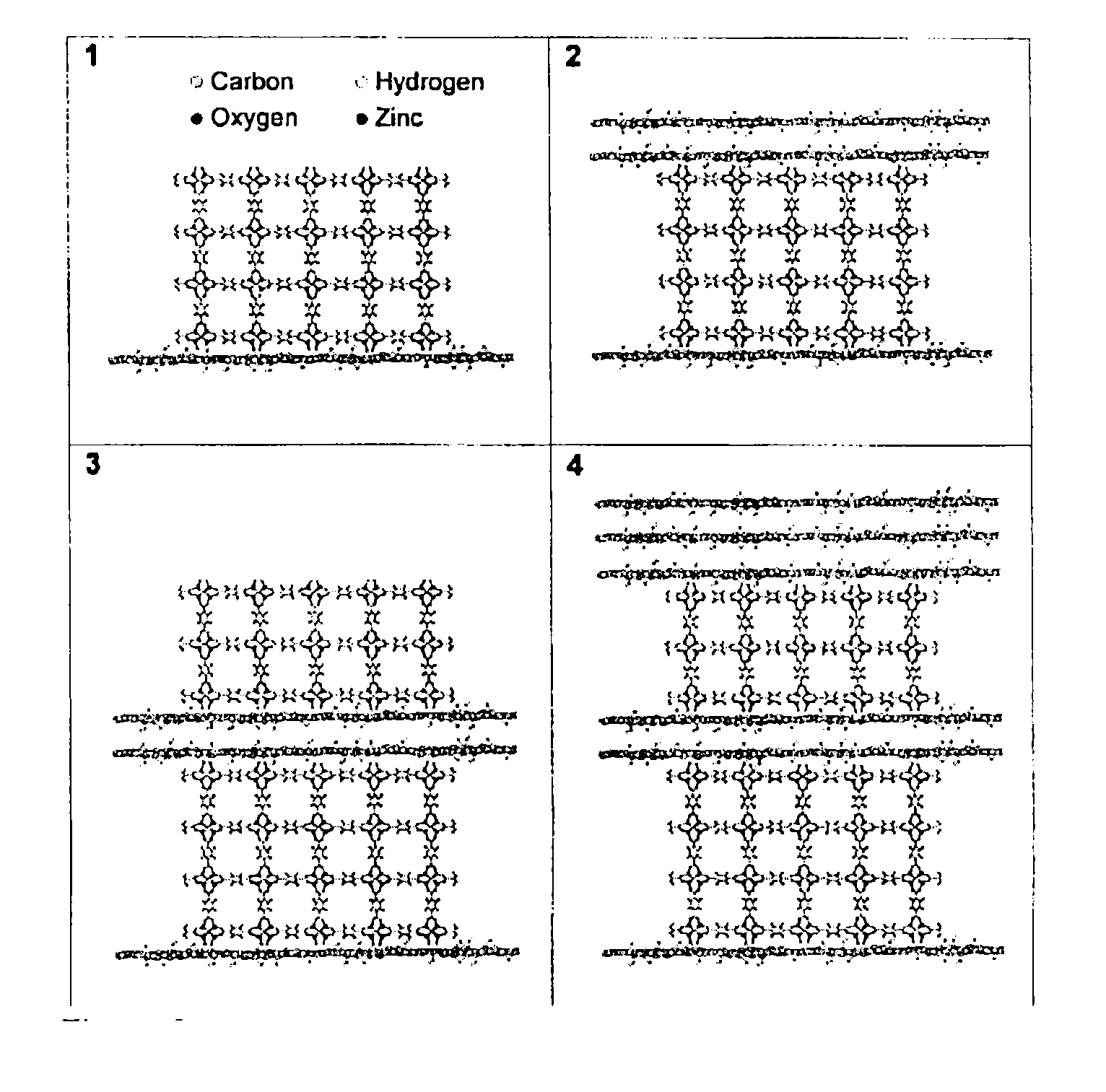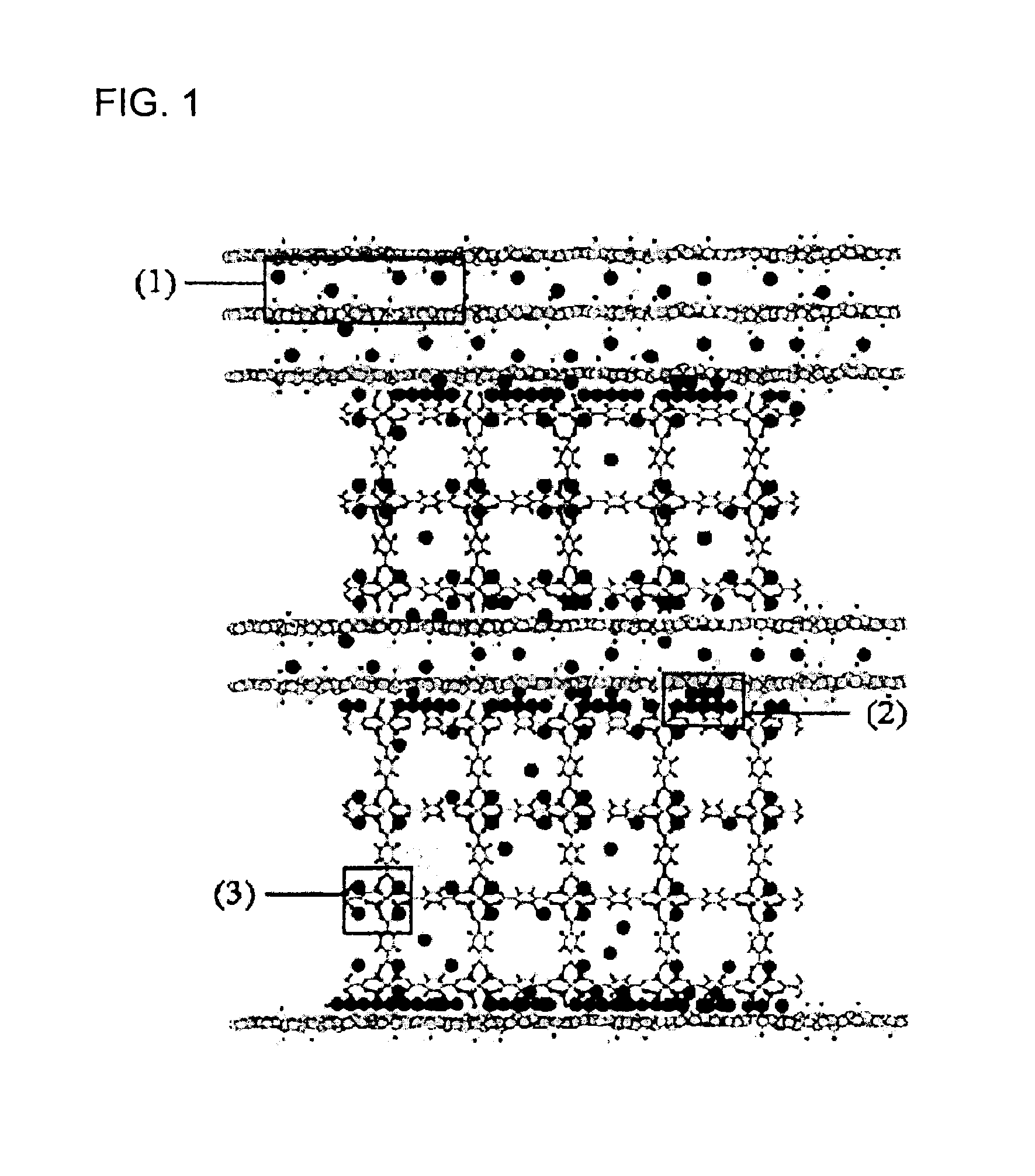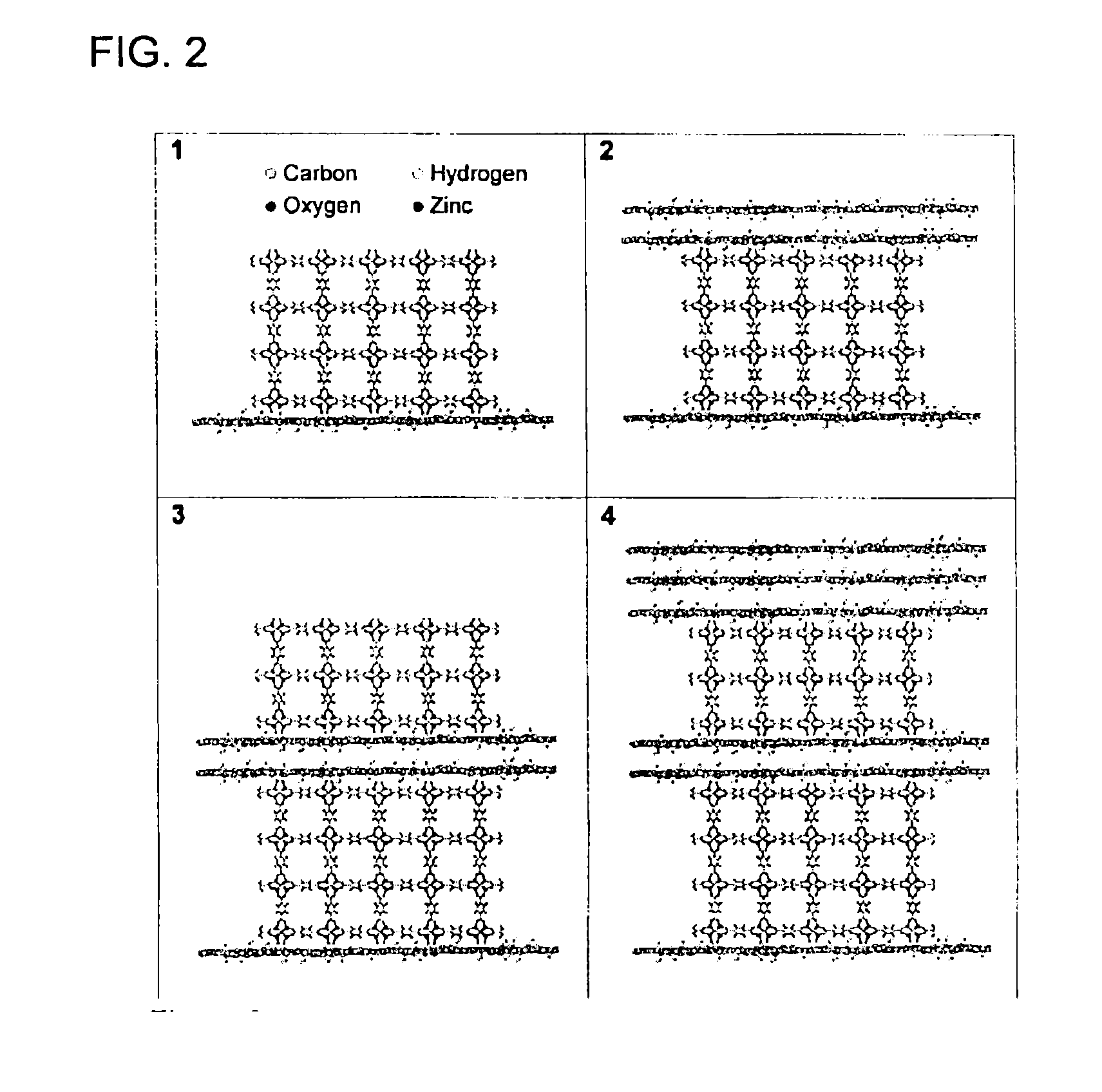Nanocomposite Materials Comprising Metal-Organic-Framework Units and Graphite-Based Materials, and Methods of Using Same
a technology of graphite and organic structure, applied in the field of nanocomposite materials, can solve the problems of limited physical adsorption at ambient conditions, weak adsorption force, and no effective and economical solution has yet been found
- Summary
- Abstract
- Description
- Claims
- Application Information
AI Technical Summary
Problems solved by technology
Method used
Image
Examples
example 1
Enhanced Adsorption of Ammonia on MOF-5 / GO Composites
[0047]In this example, MOF-5 / GO nanocomposites were evaluated as ammonia removal media. Four composites with various GO contents (5, 10, 20 and 50 wt %) were synthesized and tested. The nanocomposites as well as the parent materials were analyzed before and after ammonia adsorption to characterize their surface and chemistry, and to understand the process of NH3 adsorption / reactive adsorption.
[0048]Experimental
[0049]Materials
[0050]Graphite oxide was synthesized by oxidation of graphite (Sigma-Aldrich) using the Hummer's method. The details are described elsewhere in Panella et al. (Adv. Mater. 2005, 17, 538). MOF-5 was prepared by mixing zinc nitrate hexahydrate (10.4 g) and 1,4 benzenedicarboxylate (2 g) in N,N dimethylformamide (DMF, 140 mL) until complete dissolution of the solids. Then, the mixture was transferred into a round flask connected to a condenser and heated at 115-120° C. for 24 hours. After cooling, the supernate w...
example 2
MOF5-GO Composites: Combining the Uniqueness of Graphene Layers and Framework of MOF
[0077]Graphite oxide (GO) / metal-organic framework (MOF-5) nanocomposites were synthesized with various ratios of the two components. The composites have a unique layered sandwich-like structure where GO units divide the MOF-5 units. A possible scenario for the formation of such structures is the involvement of linkages between epoxy groups of distorted graphene layers of GO and zinc oxide building units of MOF-5. An increase in the content of GO leads to a greater distortion of the MOF-5 cubic structure and visible changes in the texture of nanocomposites. The materials are predominantly microporous with sizes of pores defined by the cavities of MOF-5 units. Moreover, specific combination and synergy between GO and MOF-5 units also result in the formation of a unique porosity characteristic of the nanocomposites.
[0078]Experimental
[0079]Materials
[0080]Graphite oxide was synthesized by oxidation of gra...
example 3
MOF-5 / GO Nanocomposites: Evaluation as Adsorbents of Ammonia
[0094]Metal-organic framework (MOF-5) / graphite oxide (GO) composite was synthesized using solvothermal synthesis route. The parent materials (MOF-5 and GO) and the nanocomposite were characterized using X-ray diffraction, SEM, TEM, FTIR and adsorption of nitrogen. They were also tested as adsorbents of ammonia in dynamic conditions. The composite material obtained had a unique layered texture with a preserved structure of MOF-5 and GO. When tested as ammonia adsorbent, the composite showed synergy enhancing the adsorption capacity in comparison with the hypothetical physical mixture of the components. Although the removal capacity was high in the presence of moisture, water had a detrimental effect on the chemistry of materials and destroyed their porous framework. This caused ammonia retained on the surface to be progressively desorbed from the materials when the samples were purged with air.
[0095]Experimental
[0096]Synthes...
PUM
| Property | Measurement | Unit |
|---|---|---|
| diameters | aaaaa | aaaaa |
| porosity | aaaaa | aaaaa |
| humidity | aaaaa | aaaaa |
Abstract
Description
Claims
Application Information
 Login to View More
Login to View More - R&D
- Intellectual Property
- Life Sciences
- Materials
- Tech Scout
- Unparalleled Data Quality
- Higher Quality Content
- 60% Fewer Hallucinations
Browse by: Latest US Patents, China's latest patents, Technical Efficacy Thesaurus, Application Domain, Technology Topic, Popular Technical Reports.
© 2025 PatSnap. All rights reserved.Legal|Privacy policy|Modern Slavery Act Transparency Statement|Sitemap|About US| Contact US: help@patsnap.com



